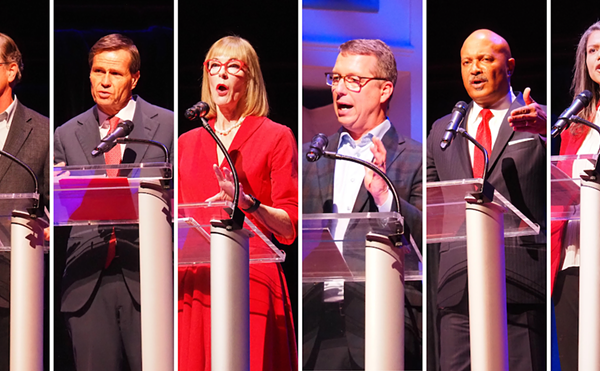A student being able to finish a school project at home with the help of online research.
A farmer selling goods using an online marketplace. A busy parent receiving telehealth services from their own living room.
An estimated 1 million Ohioans lack access to high-speed internet at home. These are the types of opportunities a new program meant to spur broadband expansion projects around the state may provide in the coming years.
Gov. Mike DeWine signed House Bill 2 into law on Monday, which creates the Ohio Residential Broadband Expansion Grant Program.
This has been a bipartisan goal at the Ohio Statehouse for a number of years, particularly among those lawmakers who represent more rural areas of the state.
The bill allocates an initial $20 million to fund broadband infrastructure projects. There is expected to be more funding toward this purpose included in the biennial budget currently being negotiated.
Though internet access has steadily improved over the past few decades, there remain some areas of the state where the geographic challenges present too much of a logistical and financial hurdle for private broadband providers to expand there.
This funding is meant to fill in “cost gaps” for expansion projects in these areas. Companies would apply for grants and the funding would be prioritized for projects that can bring high-speed internet to householders that do not currently have access.
State Rep. Rick Carfagna, R-Genoa Twp., has been a leading voice on the subject in recent years. He introduced HB 2 alongside fellow Republican Rep. Brian Stewart, R-Ashville, who has emphasized the impact this program will have on places like his rural southern Ohio district.
A year of pandemic living at home has proved just how critical internet access is, Stewart noted earlier this month.
Carfagna has repeatedly called broadband internet the “great social equalizer of our time.” Though HB 2 will not fix the problem overnight, the lawmaker called it one component toward a “larger collective effort to chip away at the number of unserved households, neighborhoods and communities throughout our state.”
The bill received bipartisan support in both legislative chambers. State Rep. Michael O’Brien, D-Warren, who sponsored similar legislation with Carfagna last term, said a program like this fulfills the state’s promise of giving opportunity to all Ohioans “irregardless of their ZIP code.”
The program has also been endorsed by a wide array of organizations representing education, business and health interests — from the Ohio Chamber of Commerce to the Ohio Rural Development Alliance. Cheryl Day, the executive vice president of the Ohio Pork Council, told lawmakers in a committee hearing that the organization’s members need reliable internet to sell goods online and access telehealth services (for themselves and their animals).
The $20 million included in this bill is a fraction of the total first proposed by Carfagna and Stewart. The version which initially passed the Ohio House of Representatives allocated more than 10 times that amount for broadband internet projects.
The Ohio Senate removed much of that funding in its version, which the House agreed to. Ahead of the House vote on May 5, Carfagna said he was told that senators planned to address this funding as part of the ongoing budget negotiations.
DeWine’s budget proposal too called for major investments toward broadband infrastructure improvements.
This story was originally published by the Ohio Capital Journal and republished here with permission.






